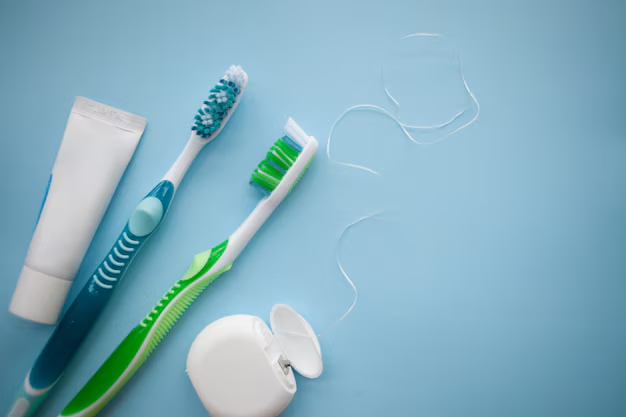Everything You Need to Know About Dentures and Partials
Losing teeth can be a challenging experience, affecting not just your smile, but also your ability to eat and speak. For those navigating this issue, dentures and partial dentures offer practical solutions that help restore functionality and aesthetics. In this comprehensive guide, we'll explore what dentures and partials are, their benefits, types, care tips, and other essential information, providing you with a thorough understanding of these dental appliances.
😲 A Glimpse into Dentures: More Than Just Artificial Teeth
Dentures have been a staple of dental health for centuries, evolving significantly over time. At their core, dentures are removable replacements for missing teeth and the surrounding tissue. They are designed to mimic the appearance of your natural teeth and gums, restoring confidence and function.
The Diversity of Dentures
Complete Dentures
These are used when all the teeth are missing from either the upper or lower jaw. Complete dentures sit on the gums and are custom-fitted to each mouth. They can be further categorized into:- Conventional Dentures: Made after the teeth have been removed and the gum tissue has healed.
- Immediate Dentures: Inserted immediately after teeth removal, with adjustments made as the gums heal.
Partial Dentures
When some natural teeth remain, partial dentures come into play. These appliances fill gaps left by missing teeth, preventing the neighboring teeth from shifting. They typically consist of replacement teeth attached to a gum-colored plastic base connected by metal framework for support.Implant-Supported Dentures
These combine traditional denture design with modern dental implants. The implants act as anchors, providing increased stability and retention. This option is particularly popular for those seeking more secure fitment.
🛡️ Benefits Beyond the Smile: Why Choose Dentures?
While improved aesthetics are a significant draw, the advantages of dentures extend beyond cosmetic appeal. Here are several benefits of opting for dentures:
- Enhanced Oral Function: Dentures improve your ability to chew food, aiding digestion and enabling the consumption of a varied diet.
- Speech Improvement: Missing teeth can impact speech; dentures help in articulating words more clearly.
- Preventing Facial Sag: By supporting the facial muscles, dentures help maintain your facial structure.
- Boosted Confidence: A complete, healthy-looking smile can significantly enhance self-esteem.
🤔 Choosing the Right Dentures: Factors to Consider
Selecting the right dentures involves a personal evaluation, often with dental professional guidance. Here's what to consider when deciding:
- Material Options: Dentures can be made from different materials, each offering unique benefits and aesthetics. Acrylic is commonly used, but more premium materials like porcelain can offer a more natural look.
- Budget Constraints: Denture costs can vary widely based on type and complexity. While dental insurance may cover a portion of the cost, understanding your budget is crucial.
- Durability and Maintenance: Consider how much effort and care you're willing to invest in maintaining your dentures. Some materials require more upkeep than others.
- Fit and Comfort: Proper fit is essential to avoid discomfort and ensure usability. Regular check-ups are necessary to adjust the fit as your gums change over time.
🧼 Caring for Your Dentures: Daily Routines and Long-Term Tips
Maintaining your dentures involves daily routines and occasional professional checks. Proper care will extend the lifespan of your dentures and keep your mouth healthy.
Daily Denture Care
- Rinse and Clean: Always rinse your dentures in water after eating to remove food particles. Clean them daily using a soft toothbrush and non-abrasive cleaner to avoid scratches.
- Overnight Soak: Keep your dentures moist. Overnight soaking in a denture cleaner prevents them from drying out and losing their shape.
- Oral Hygiene: Maintain regular oral hygiene with your gums, tongue, and any remaining teeth by brushing them daily.
Long-Term Maintenance
- Regular Dental Visits: Schedule regular check-ups with your dentist to ensure a proper fit and examine your oral health.
- Handling with Care: Avoid dropping your dentures. They are delicate and can break if mishandled.
- Watch for Wear and Tear: Look out for signs of damage or discomfort, which can indicate the need for adjustment or replacement.
🤔 Frequently Asked Questions About Dentures
Q: How long will my dentures last?
A: With proper care and maintenance, dentures can last several years. However, periodic adjustments may be necessary due to natural changes in your gums and mouth.
Q: Will dentures change how I eat?
A: Initially, you may experience some changes, but with time and practice, you will adapt to eating with dentures. Starting with softer foods and cutting food into smaller pieces can help ease the transition.
Q: Can I sleep with my dentures in?
A: It's generally recommended to remove dentures at night to allow your gums to rest and prevent fungal infections.
📊 Quick Summary: Key Takeaways on Dentures and Partials
- Complete Dentures: Ideal for those missing all teeth in one or both jaws.
- Partial Dentures: Suitable for those still retaining some natural teeth.
- Implant Dentures: Offer enhanced stability with dental implants.
- Routine Care: Essential for longevity and oral health, includes cleaning, storage, and regular oral assessments.
- Consultation: Professional guidance aids in selecting the right type based on needs and lifestyle.
🛠️ Empower Your Smile: Next Steps
Understanding the benefits and care of dentures is crucial in making informed decisions for your oral health. Whether you're considering full or partial dentures, take the time to consult a dental professional who can provide personalized advice and solutions. With the right choice and routine, dentures can significantly enhance your quality of life, paving the way for confident smiles and improved day-to-day functionality.

Related Topics
- a Bridge For Teeth
- a Denture Plan That You Can Pay Monthly Payments
- Are Dentures Covered By Insurance
- Are Dentures Covered By Medicare
- Are Dentures Uncomfortable
- Are Permanent Dentures Thinner Than Temporary Dentures
- Are Snap-in Dentures Covered By Insurance
- Are There Plastic Dental Partials With Metal
- Can a Tooth Be Added To a Valplast Denture
- Can Dogs Get Dentures